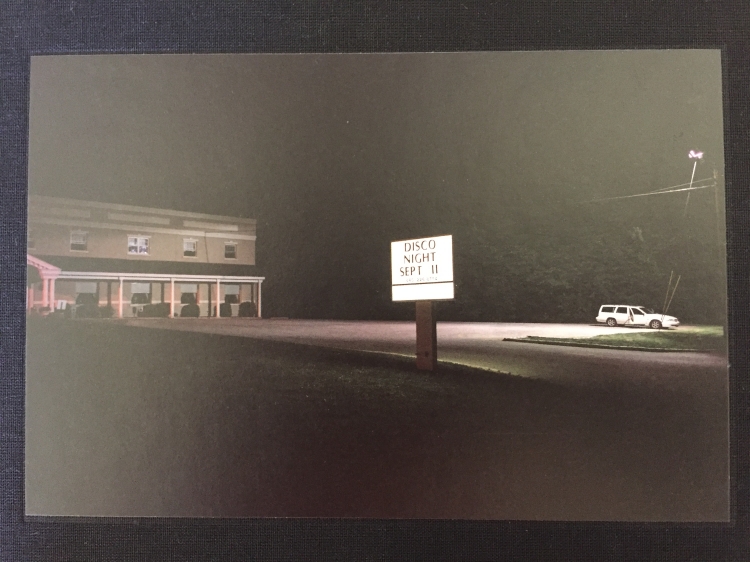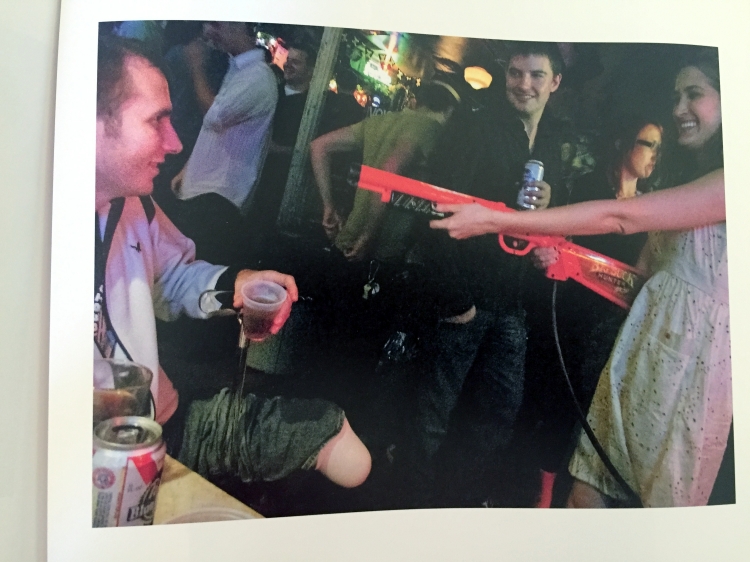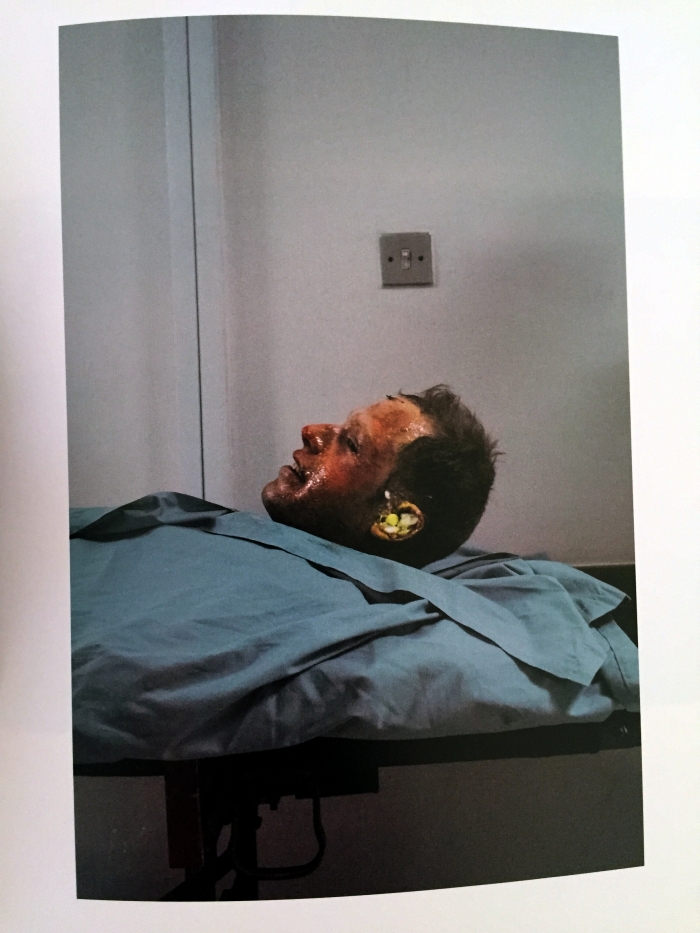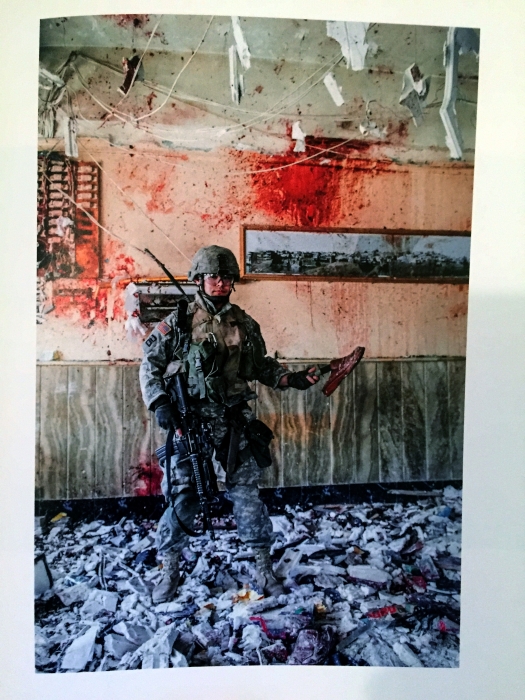Disco Night Sept 11

I received this book as a gift last year when it came out and was moved to take it out again due to the recent anniversary of 9/11.
Disco Night Sept 11, a book of photographs and writing by Peter Van Agtmael, offers a vivid perspective of the American invasion of Afghanistan.
As a group, Van Agtmael’s pictures depict a more holistic view of soldiers’ experiences, along with glimpses of the impact of war on others, including the photographer himself. In his thoroughness, Van Agtmael is able to respectfully record pain and question its circumstances without being overtly political. The images are aesthetically straightforward but they are not detached; they suggest a photographer whose eyes are empathetic though they remain wide open.

Short texts, between one sentence and one page long, accompany the photographs. Most are written by the photographer, but there are also some (particularly interesting) excerpts from interviews (with veterans, or Van Agtmael’s own father). Much of the writing includes the first person, which somehow makes it feel more real than the more detached language of news.

The pictures in this book are difficult to look away from or forget, and the written passages are simply wrenching. They describe the war and the consequences faced by American participants (most of whom are quite young) and their families. They also paint an especially bleak picture with regard to the effect of the United States’ actions on the nations that were invaded after 9/11.

The text opposite this picture reads:
I was sleeping in a nearby Army base when the echo of an explosion from Mosul startled me awake. I walked over to the motor pool as a column of Stryker armored vehicles rolled in. A few men hurried past me, their faces tightly drawn. I joined the next patrol heading into town and was told there had been a suicide bombing. Nine people had been killed and twenty-three wounded in a crowded cafe during the breakfast hour. The Strykers stopped down the street from the blast site, and we walked to the gaping hole in the block of buildings. The soldiers had stopped by the Abu-Ali restaurant many times for sugary tea or a chat with the friendly owner. Now bits of flesh and scorched food, splinters of furniture and crockery choked the floor. The streets were empty except for a few curious bystanders. The patrol moved to the hospital to check on the victims. Ali, the owner, lay on one of the beds. Only his nose and lips were visible beneath the bandages, and they were caked in dried blood. He did not survive the day.
Van Agtmael has created a keen record of the American response to 9/11 that implores us to ask: Why? What was this all for?